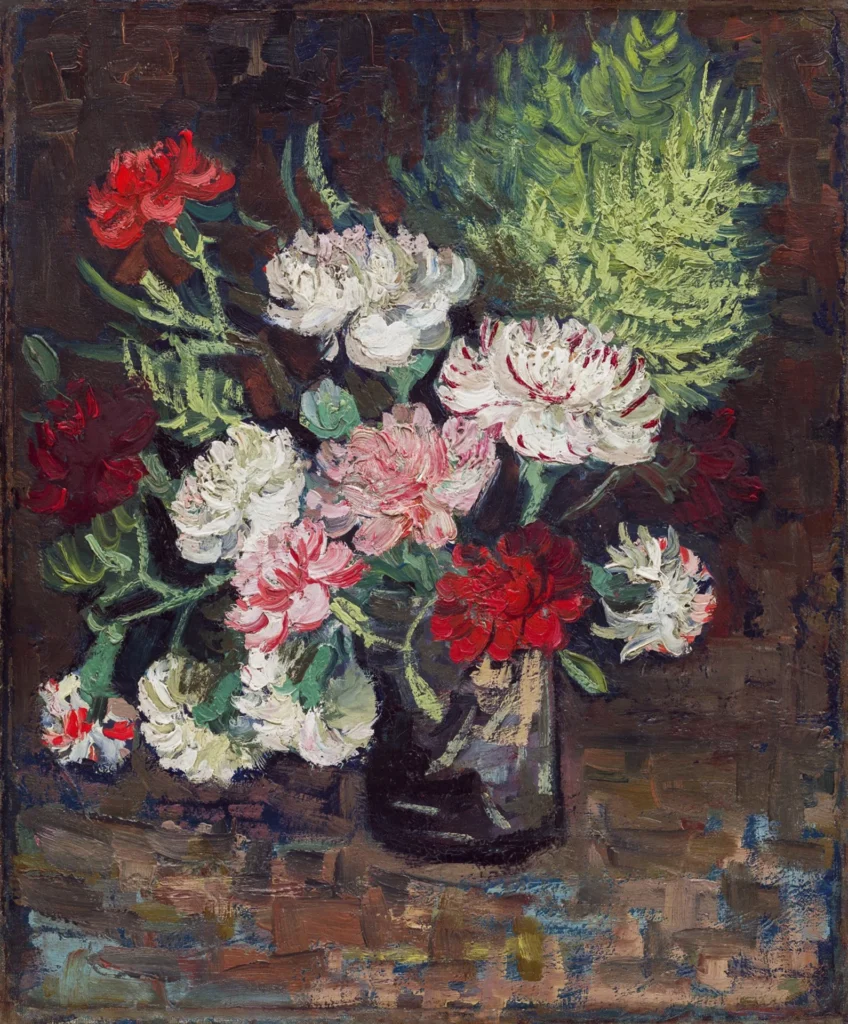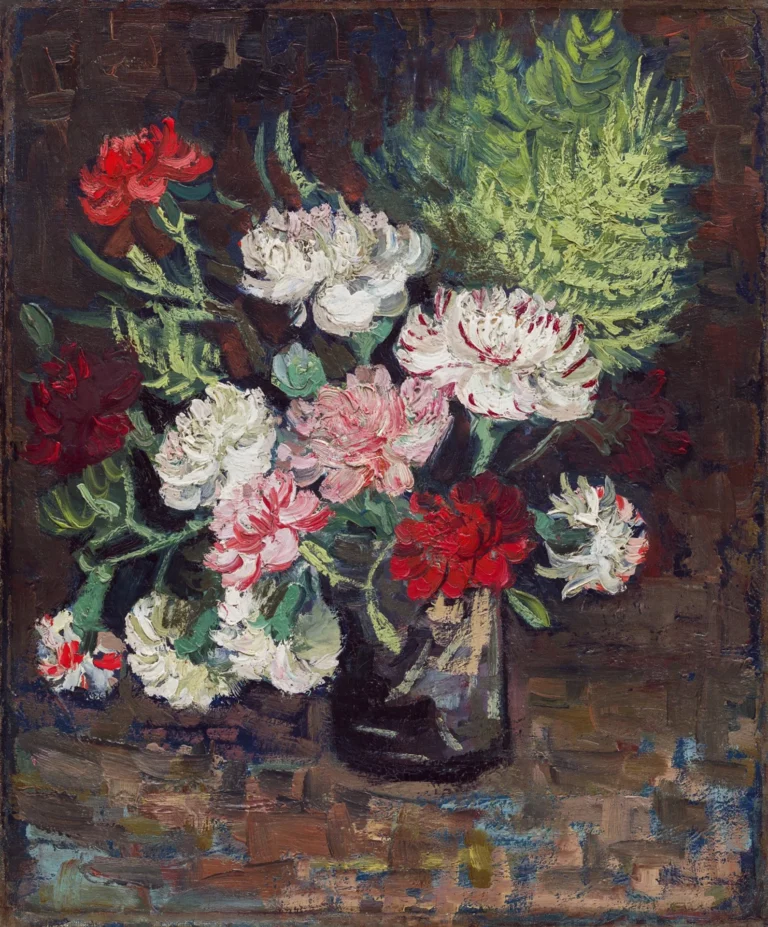Vase With Carnations (1886)
Vincent van Gogh's Vase with Carnations is a captivating example of the artist's exploration of color and form during 1886. Created during his time in Paris, this work features a bouquet of carnations rendered in thick brushstrokes and vibrant hues. Van Gogh painted multiple versions of florals around this time, showcasing his interest in capturing the beauty of nature while experimenting with new artistic influences, including Impressionism and Japanese prints. This creation reflects his artistic journey and the significant support he received from his brother Theo and friends.
Year 1886
About the Artwork
In 1886, van Gogh was deeply influenced by the modern art movements he encountered while living in Paris. During this productive summer, he focused on floral still lifes, creating around 35 pieces. His choice of carnations was likely inspired by the flowers gifted to him by friends and patrons, serving as both models for his art and symbols of his relationships. The iconic thick brushstrokes and vibrant palette seen in Vase with Carnations are a testament to van Gogh's ability to express emotion and movement through color, enriched by the artistic stimuli of Paris. Each version of this painting reflects the artist's passionate pursuit of beauty and his continual growth in understanding the interplay of color and form.
Did You Know
Van Gogh often received flowers from friends which served as subjects for his floral still lifes, providing not just material for his work but also emotional connections to his relationships.
Carnations were especially significant for van Gogh, representing not only beauty but also personal connections, reflecting the depth of human emotion that can be portrayed through nature.
Van Gogh’s floral still lifes, including the Vase with Carnations, are celebrated for their innovative use of color and composition, paving the way for future generations of artists to explore similar themes in still life.










